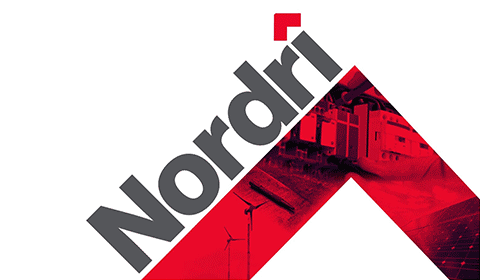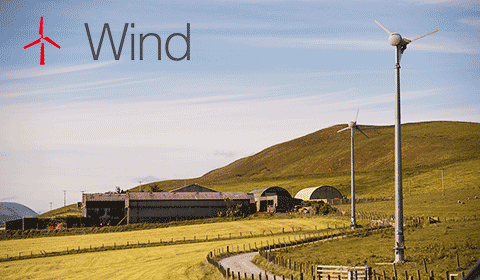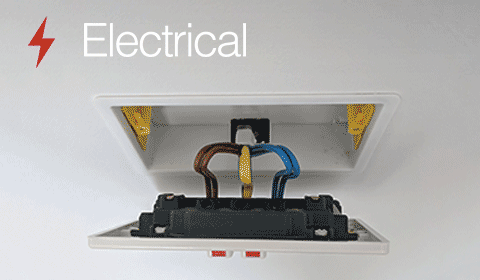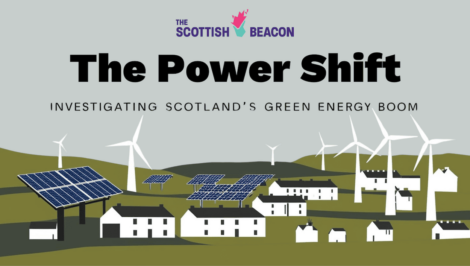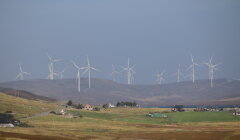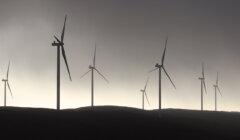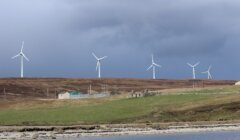Power Shift / Voices from rural Scotland on the renewable energy rush
Rural communities say the transition to green energy is leaving them sidelined. Over coming weeks Shetland News, and its partners in the Power Shift project, will be exploring how fair the energy transition really is; from community benefit and shared ownership to accountability and the planning system
SCOTLAND is in the grip of an energy revolution. Across the country, wind and solar energy projects are booming. Planning applications are flooding the system for more wind farms, battery energy storage systems and other associated infrastructure.
There is a clear need for an increase in renewable energy generation, but the scale and speed of the roll-out means that many communities feel their concerns are being overlooked. Earlier this week, representatives of 57 Highland community councils came together to call on MSPs and MPs to secure urgent debates at both Holyrood and in the House of Commons.
Read more:
The Scottish Beacon is all about amplifying community voices and so – as part of our Power Shift project, which explores the dynamics behind the Scottish green energy revolution – we asked people across the country how they were experiencing this process. We had nearly 100 responses from 67 distinct locations across Scotland, covering everything from major cities to small villages and remote islands.
What we heard: the big themes
Analysis of all the survey responses revealed six clear areas of concern. Environmental impact was by far the most common. People spoke of hillsides turning into industrial zones, peat bogs being torn up, and the slow, creeping loss of habitats. Many stressed the cumulative nature of projects – each new wind farm, pylon line or substation adding to a change in the landscape that can’t be undone.
Next came frustration with the planning process – described as opaque, unbalanced, and weighted towards developers. “We’re drowning in applications,” one person told us, “and we’ve no chance of keeping up.” That frustration fed into another common theme: the demand for a real voice in decisions, not just a box-ticking consultation after plans are already made.
Money and ownership were another flashpoint. Why, people asked, are those living beside turbines still facing high bills and even fuel poverty, while profits flow overseas? Quite a few said they wanted public or community ownership so that more of the benefit stayed in Scotland.
Become a member of Shetland News
And running under it all was something less visible: the mental strain. The stress of fighting proposals, the sense of losing the place you know, and the speed of change — it all adds up.
Plenty of people back the shift to renewables. But the message was clear: it has to be a fair transition, one that safeguards the environment, shares the gains, and lets local voices steer the future.
Taking a toll on communities
Many of the responses reflected a sense of alienation and detachment from decision-making; concerns over transparency; and anxiety about the environmental, social, and visual impact of developments, especially in small rural communities.
One respondent from Lerwick, Shetland wrote:
“The community is not all against green energy or all for such schemes, however if we could adapt to the smaller scale turbine projects such as having small community – i.e. public halls, rural villages – that could be more rewarding to the community rather than destroying vast peat wilderness.”
Another in Beauly, Inverness-shire wrote:
“We are drowning under a mountain of planning applications. It’s horrendous, with huge negative impacts on mental health and wellbeing…. It is tearing our communities apart.”
A responder in Ardgay, Sutherland said:
“The landscape is getting ruined with the cumulative impact of turbines, pylons, substations and BESS. The wildlife will never recover. My mental health has taken a plunge.”
Someone in Rothienorman, Aberdeenshire added:
“The mental health and stress of trying to participate in the planning process of these projects is taking its toll on our residents and because we have no idea of how the ECU [the Scottish Government Energy Consents Unit] makes its decisions, we have no way of knowing how best to object to proposals.”
A Shetland islander from Whalsay summed up the frustration:
“Our beautiful unspoiled land has been destroyed bit by bit. The benefits to locals are negligible, yet we are left living in an industrialised landscape.”
Who owns our energy?
The question of ownership came up repeatedly. One respondent from St John’s Town of Dalry, Dumfries and Galloway said:
“I agree that Scotland needs renewable power, however I believe that all of the renewable sector should be in public ownership. Private companies build and take the money from Scotland and its people with no benefit to local people. Energy is sold back to Scottish residents at a higher rate than England. Meaning that the blight on the landscape only benefits rich investors and not the people.”
Some have pinned hopes on GB Energy – a proposed publicly owned company – to shift the balance toward community benefit. Yet without strong public control, critics fear it could still prioritise private investment over genuine public or community ownership.
An irony at play here is that Europe’s largest generator of renewable energy, Statkraft, is fully owned by the Norwegian state and Vattenfall – which runs various on- and offshore wind farms in Scotland, England and Wales – is entirely owned by the Swedish state. Statkraft has invested over £1.3 billion in the UK’s renewable energy infrastructure. They are a leading provider of Power Purchase Agreements (PPAs) and have established six operational onshore wind farms, five of which are in Scotland.
So while our Scandinavian neighbours operate publicly and community-owned renewables, Scotland does not. The potential for a different approach is clear – but many say it is being overlooked.
Meanwhile, people in Scotland often feel sidelined from decision-making and short-changed in the benefits. A resident from Lewis, Outer Hebrides reflected on the planning process for the Spiorad na Mara offshore windfarm:
“The community benefit fund has been proclaimed over and over but it is small in overall terms and feels like we are being paid off, particularly if we are opposed to the wind farm. It also feels like ‘authorities’ have firmly decided in favour of the project and are not interested in real discussion with local people, only in negotiation with the company, national government and so on.”
What could be done?
The responses display the extent of the problem and the strength of feeling in rural communities. The problem is multifaceted but includes the feeling of a free-for-all, a lack of any coherent strategy; a distinct lack of democracy and transparency in the process; and a crisis of environmental justice whereby communities that are feeling the brunt of the impact of the renewables revolution are still suffering fuel poverty.
However, if the responses reflect a level of public anger and discontent, they also suggest some potential solutions.
One responder from Kirkwall, Orkney wrote:
“Strengthen the planning system to favour communities, such as by adhering to the provisions of the Aarhus Convention, and to ensure transnationals, and local authorities, cannot ride roughshod over community interests. Investigate the use of localised grids with community management structures designed to utilise locally available energy resources first, but with the intention to use SMRs as the provision of choice for baseload.”
From Lerwick came a call for more authentic dialogue:
“If a project is to happen, then actual community engagement would be ideal. Instead of false engaging when the project is already going ahead without the community approval.”
Others focused on decision-making transparency. A respondent from Voe said:
“Stop local authorities from making decisions behind closed doors… The meetings to discuss planning and all that goes along with it should be public.”
Another from Beauly, Inverness-shire suggested:
“Give communities help so they understand the whole planning procedure. Give people funds so they can challenge the power companies.”
Some ideas were about accountability and respect. As one resident from Whalsay put it:
“The renewables industry needs to listen and be legally obligated and accountable to the health and environmental impact on these communities. They also need to stop calling concerned communities NIMBYs – we are not in primary school.”
Others focused on fairness. From Beauly, Inverness-shire:
“The communities who are impacted [should be] given next to free energy.”
From Ardgay, Sutherland came a call for a pause:
“No more renewable applications or planning granted, we are saturated and produce a ridiculous amount of wind power here – way more than even the whole of Scotland needs.”
The onshore renewables revolution is a huge issue of public interest across mostly rural communities across Scotland.
Through in-depth reporting, a dedicated podcast series, and cross-community collaboration, we aim to shed light on these issues and amplify voices from across the country.
The Power Shift will be publishing stories from these communities in the months ahead.
Sign up to the Scottish Beacon newsletter or our own newsletter at the bottom of the page for all the latest from this project.
By Mike Small and Rhiannon J Davies
Become a member of Shetland News
Shetland News is asking its readers to consider paying for membership to get additional perks:
- Removal of third-party ads;
- Bookmark posts to read later;
- Exclusive curated weekly newsletter;
- Hide membership messages;
- Comments open for discussion.
If you appreciate what we do and feel strongly about impartial local journalism, then please become a member of Shetland News by either making a single payment, or setting up a monthly, quarterly or yearly subscription.















